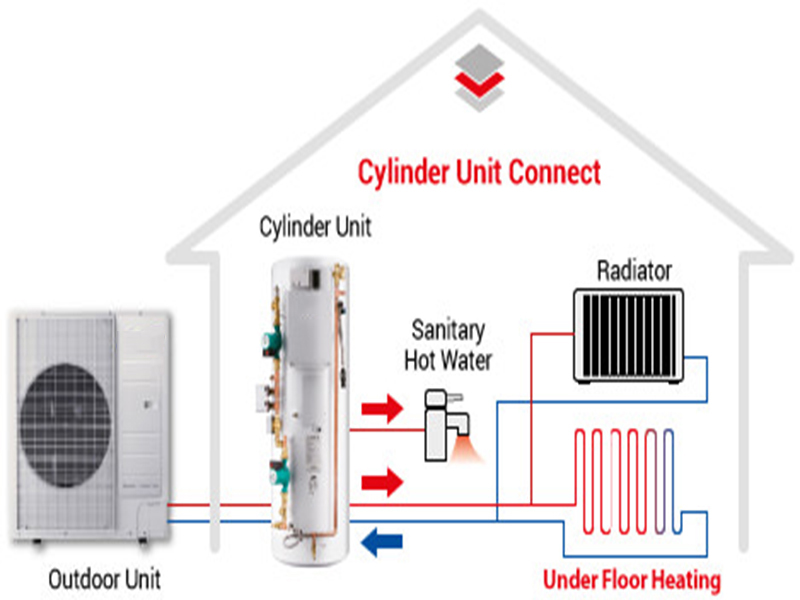Air source heat pumps absorb heat from the outside air. This heat can then be used to heat radiators, underfloor heating systems, or warm air convectors and hot water in your home.
An air source heat pump extracts heat from the outside air in the same way that a fridge extracts heat from its inside. It can get heat from the air even when the temperature is as low as -15° C. The heat they extract from the ground, air, or water is constantly being renewed naturally, saving you on fuel costs and reducing harmful CO2 emissions.
Heat from the air is absorbed at low temperature into a fluid. This fluid then passes through a compressor where its temperature is increased, and transfers its higher temperature heat to the heating and hot water circuits of the house.
An air-to-water system distributes heat via your wet central heating system. Heat pumps work much more efficiently at a lower temperature than a standard boiler system would.
Air source heat pumps are more suitable for underfloor heating systems or larger radiators, which give out heat at lower temperatures over longer periods of time.
The benefits of Air Source Heat Pumps:
What Air Source Heat Pumps (also known as ASHPs) can do for you and your home:
l Lower your fuel bills, especially if you are replacing conventional electric heating
l Get paid for the renewable heat you produce through the government’s Renewable Heat Incentive (RHI).
l You earn a fixed income for every kilowatt hour of heat you produce. This is likely to be used in your own property, but if you are lucky enough to be connected to a heat network you might be able to get an additional payment for ‘exporting’ surplus heat.
l Lower your home’s carbon emissions, depending on which fuel you are replacing
l Heat your home and provide hot water
l Virtually no maintenance, they’ve been called ‘fit and forget’ technology
l Easier to install than a ground source heat pump.
Post time: Jul-14-2022


